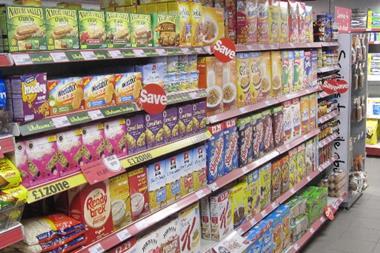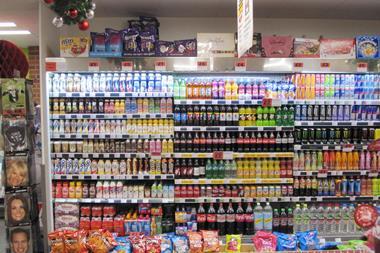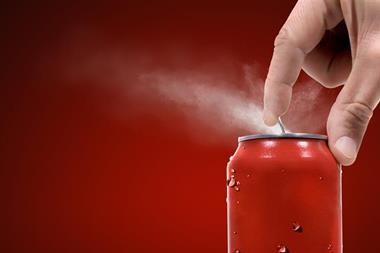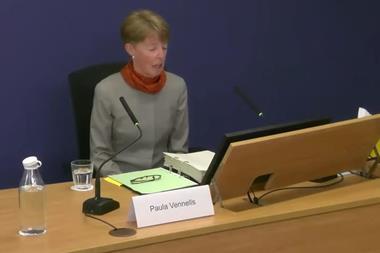C-Store welcomed forward-thinking retailers and Britvic’s senior colleagues to explain the imminent soft drinks industry levy, and to discuss its implications for the trade
After years of challenges and responses from campaigners and the industry, the soft drinks industry levy or ‘sugar tax’ was finally given the go-ahead in the 2016 Budget. It means that from April 2018, soft drinks high in added sugar will be subject to an additional tax at the point of manufacture or import, with a higher rate of tax applying to the products with the highest levels of added sugar. The decision is likely to cause a huge re-alignment in product formulations, prices and possibly even pack sizes in the soft drinks sector, one of the most important categories for convenience retailers.
This levy and the threats and opportunities that come from it were the main points of discussion during the recent Soft Drinks Summit, held in partnership with Britvic and William Reed brands Convenience Store and The Morning Advertiser.
The new soft drinks industry levy, explained Nigel Paine, commercial operations director at Britvic, is the government’s attempt to reduce the prevalence of obesity in the UK and, in turn, save the NHS money.
“You can’t work in the food and drink industry if you don’t have an interest in health, and there are some worrying facts that Britain is deemed as having more obese people than any other European nation,” explained Paine.
“Some of the facts I learnt in my research have been quite shocking – one in 10 kids are technically obese when entering primary school and one in five are obese when they leave primary school.”
He added that the high number of people overweight creates a direct cost to the NHS – and therefore the government – of £5.1bn, and costs the economy as a whole £27bn.
Drinks that have more than 8g of sugar per 100ml will be taxed at 24p per litre and those which have 5-8g of sugar per 100ml will be taxed at 18p. It’s levied when it leaves the warehouse, or it’s the first receiver of goods on imported goods who receives the tax. There is no tax for pure juice or dairy-based drinks.
Soft drinks industry levy
At a glance
Drinks containing more than 8g of added sugar per 100ml will be taxed at 24p per litre. When VAT is added, this equates to about 10p per 330ml can
Those with 5-8g of sugar per 100ml will be taxed at 18p per litre
Products with less than 5g of added sugar are exempt, along with fruit juices, products without added sugar and dairy-based drinks
The tax is levied on the manufacturer, or first receiver of goods for imported products.
The government has said money raised from the levy will go to school sport; it originally estimated the levy would raise £500m, although this has since been downgraded to £380m. As a levy rather than a tax, consumers don’t directly pay it but, given the margins and reality of the sector, the extra cost will inevitably be passed on to consumers. How it will be passed on is less clear, as retailers of all sizes will still have the freedom to choose how they price their stock.
Paine explained that before this levy came into discussion, Britvic noticed a consumer trend towards lower sugar consumption and was the first soft drinks company to introduce Stevia to its products, in 2012. Fruit Shoot and Robinsons added-sugar variants were removed from distribution in 2014/15, and all Britvic’s recent NPD has been under or exempt from the soft drinks industry levy. Since 2012, the firm has removed more than 4.5 million tonnes of sugar from its products – the equivalent of 19bn calories on an annualised basis.
“Going forward we will continue to reformulate our products and look to reduce calories through sugar reduction. Our innovation is going to go beyond sugar so we will be looking at how to take preservatives out and make the drinks healthier. We will also be looking at the way we market our products; we will avoid advertising full-sugar products and educate people on the benefits of no- and low-sugar products.”
Speaking of what retailers should be doing in preparation for the levy, Nigel added: “Retailers should be looking to make sure they have enough choice of no-sugar options and make sure it’s clear what ingredients are in the products by keeping low- and no-sugar products together and signposting these products.”
Kiti Soininen, head of UK food, drink and foodservice research at Mintel, presented research showing that sugar is on a par with fat as a leading health “foe”. Mintel research has shown that 35% of shoppers say that a change of recipe would make them less loyal to their favourite brand and 55% of shoppers are concerned about artificial sweeteners (27% are concerned about natural sweeteners such as Stevia). However, younger consumers are not concerned about sweeteners, suggesting there’s likely to be a growth of acceptance of this ingredient.
The research highlighted the other trends to be aware of are those for portion control, less sweet flavours, naturalness and nutrition – meaning consumers are less concerned about calories and more concerned about the nutritional benefits of the ingredients.
The bad news from Mintel’s research is that when people were asked what they would do if the price of sugary carbonated soft drinks was to increase by 24p per litre, 44% of under-45s and 53% of students and 50% of mums said they’d cut back.
But the good news is that these people said they would continue to buy into the soft drinks category – 38% say they would switch to a low-sugar version, 30% say they would switch to a less-expensive brand and 22% say they would switch to a premium brand.
Soininen added: “While the industry levy will affect some people’s behaviour, there’s plenty of opportunity to keep them within the market. There’s also great scope to tap into the alcohol-reducing and teetotal trend as a sizeable 32% of adults were limiting their alcohol intake in 2016.”
Gareth Barrett, public affairs manager at the British Soft Drinks Association (BSDA), explained what the soft drinks sector was doing as a whole.
“Since 2012 we as an industry have reduced sugar from soft drinks by 17.8%. That’s more than 20% per serve with volumes growing, which is considerable, so our reaction ahead of the tax was that we were cutting sugar already.
“Since the tax, we’ve seen firms saying they plan to cut sugar levels to below the levy threshold. It’s work that the companies were doing already so the levy has made us walk a bit faster, but we’re still taking the same journey. The incentive to reformulate has also changed – before it was to improve flavour or reduce sugar, whereas now its to make sure you don’t impact your customers with the extra cost.”
Barrett voiced his uncertainty over whether this tax would have any beneficial impact, as in other countries in the world it has changed consumer behaviour without impacting obesity. He pointed out that in Scotland, sales of low- and no-sugar drinks have increased, but sales of cakes and chocolate have also gone up as people ‘feel better about it’ and are essentially substituting the calories with other treats.
“We have to be prepared for the levy as much as we can be, but I think we will only know what’s going to happen when it happens. We don’t think we should have been targeted in this way, but we understand why. Our reaction is that we understand that obesity is a problem and we understand that soft drinks might be a tiny part of that – only 2% of UK calories come from soft drinks – but for that tiny part, we’re going to do a lot.”
In the summit’s afternoon session, c-store retailers took part in a workshop focusing on how they will be affected by the levy, giving them an opportunity for an open discussion with members of the Britvic team.
Charles Whitehead, client manager at research and consultancy firm HIM, presented research to explain shopper behaviour. He said that while the majority of consumers are aware that a soft drinks levy will be coming into place, only 47% expect soft drink prices to rise after the levy is in place, which he described as concerning and “slightly absurd”.
Research from HIM showed that when consumers were asked what they would choose as a healthy drink, 50% said water, 18% said fruit smoothies and 13% said diet fizzy drinks. When asked what they’d choose as an alternative to a sugary soft drink, 34% said they would choose water and 23% said they’d opt for a diet equivalent of the brand. “It’s interesting that people say they would transfer from a full-sugar fizzy drink to water as opposed to a diet version of the drink,” he pointed out.
But when looking at what shoppers currently buy, 36% buy full-sugar fizzy drinks, 21% buy energy drinks, 15% buy diet fizzy drinks and just 13% buy water.
He pointed out that research results do need to be taken with some caution when putting into action, as what shoppers claim to do and what they actually do can be quite at odds.
Trystan Farnworth, commercial director for convenience and impulse, pointed out that the under-trade on no- or low-sugar soft drinks in the impulse channel is pretty big compared with the grocery channel so there’s a potential threat there with the soft drinks industry levy coming into force if retailers don’t make changes. He said: “We need to make sure we turn that threat into an opportunity.”
Farnworth described how c-store retailers can start to build awareness of the levy and show they are keen to help people live healthy lives with simple display solutions. For example, Britvic has created a till-point display for one of its customers which holds bottles of Fruit Shoot alongside pieces of fruit and the messaging “buy a Fruit Shoot and take a free piece of fruit”.
Mums’ concerns

Carrie Longton, co-founder of Mumsnet, revealed that 87% of mothers are conscious of sugar content when purchasing soft drinks.
Nearly half of mums who responded to the Mumsnet survey stated they choose drinks with lower-added sugar and only 14% of mums say they are happy to buy drinks with added sugar for their children to drink at home. What’s more, if their children’s regular soft drink went up in price due to a levy, 60% of mums said they would switch to a cheaper no- or lower-sugar version.
Carrie explained that what mums want for themselves and what they want for their children can vary drastically, and it will vary depending on if they are purchasing for at-home consumption or for consumption during a day trip when they are allowing their children some treats.
She sympathised with soft drinks manufacturers who are having to work with a myriad of conflicting consumer requirements, pointing out that some mums would prefer sugar in their drinks to sweeteners.
“We don’t want to demonise anything,” she added. “We just want to be able to make an informed choice.”
Retailer reaction

Attending c-store retailers all said they found the Summit eye-opening and had left feeling they needed to make changes in preparation for the levy.
David Charman (pictured left), of Spar Parkfoot, West Malling, Kent, said he’d “gone from zero to hero” in his knowledge of the levy.
It was agreed that a collaborative approach between manufacturers and the trade was required in order to ensure consumers don’t feel distrustful.
“This levy will have quite an impact next year,” said David. “The one thing I don’t want manufacturers to do is to try the stealth approach in charging customers this tax. My consumers are too savvy for that and it’s important they understand what’s happening, but it’s hard to explain these things to consumers. I want them to know what is tax and what is retailer profit so they don’t think they are being overcharged.”
David also pointed out that retailers needed help when making space for new low-sugar drinks. “We are good at finding out what a new product is, but we have trouble knowing what to take out and that’s something we need help with.”
Harry Goraya, owner of Rosherville Post Office in Gravesend, Kent, agreed that it is paramount consumers understand what the industry levy is and how it will affect prices.
Paul Cheema, co-owner of Malcolm’s Stores, added: “If we can collaborate now that will put us in a good position for when the levy comes into place. Today has brought home the importance of the levy.”
























1 Readers' comment